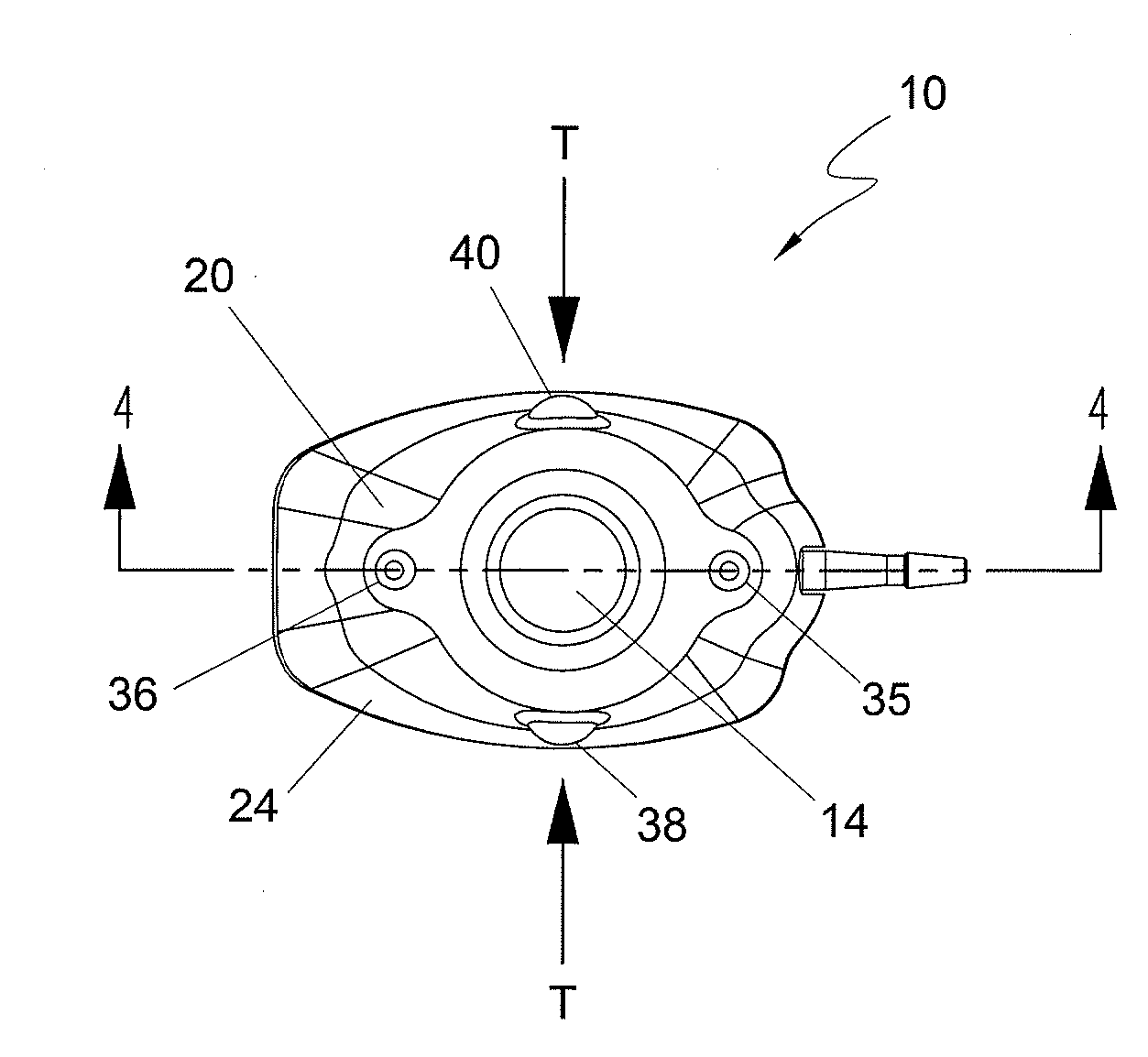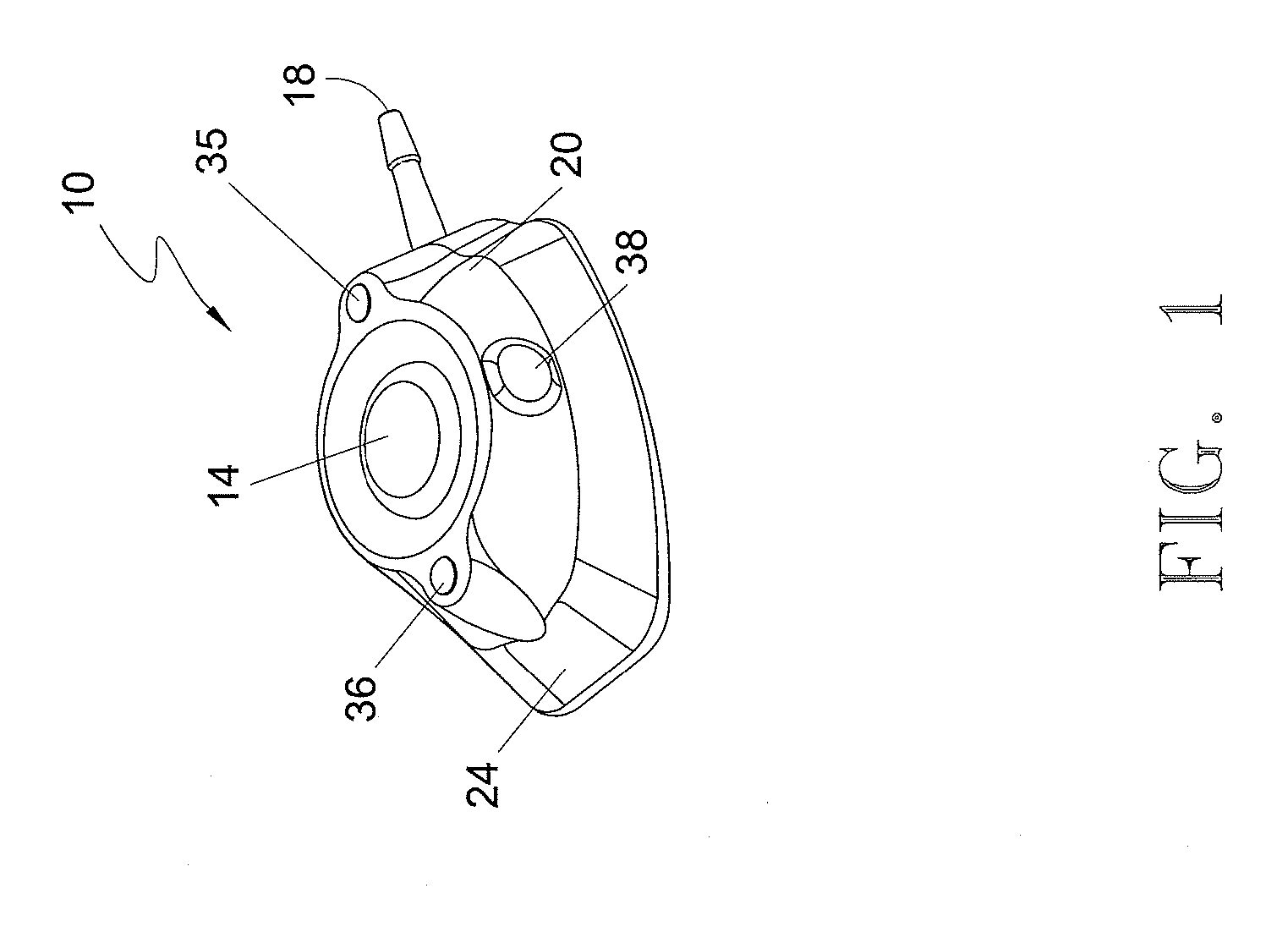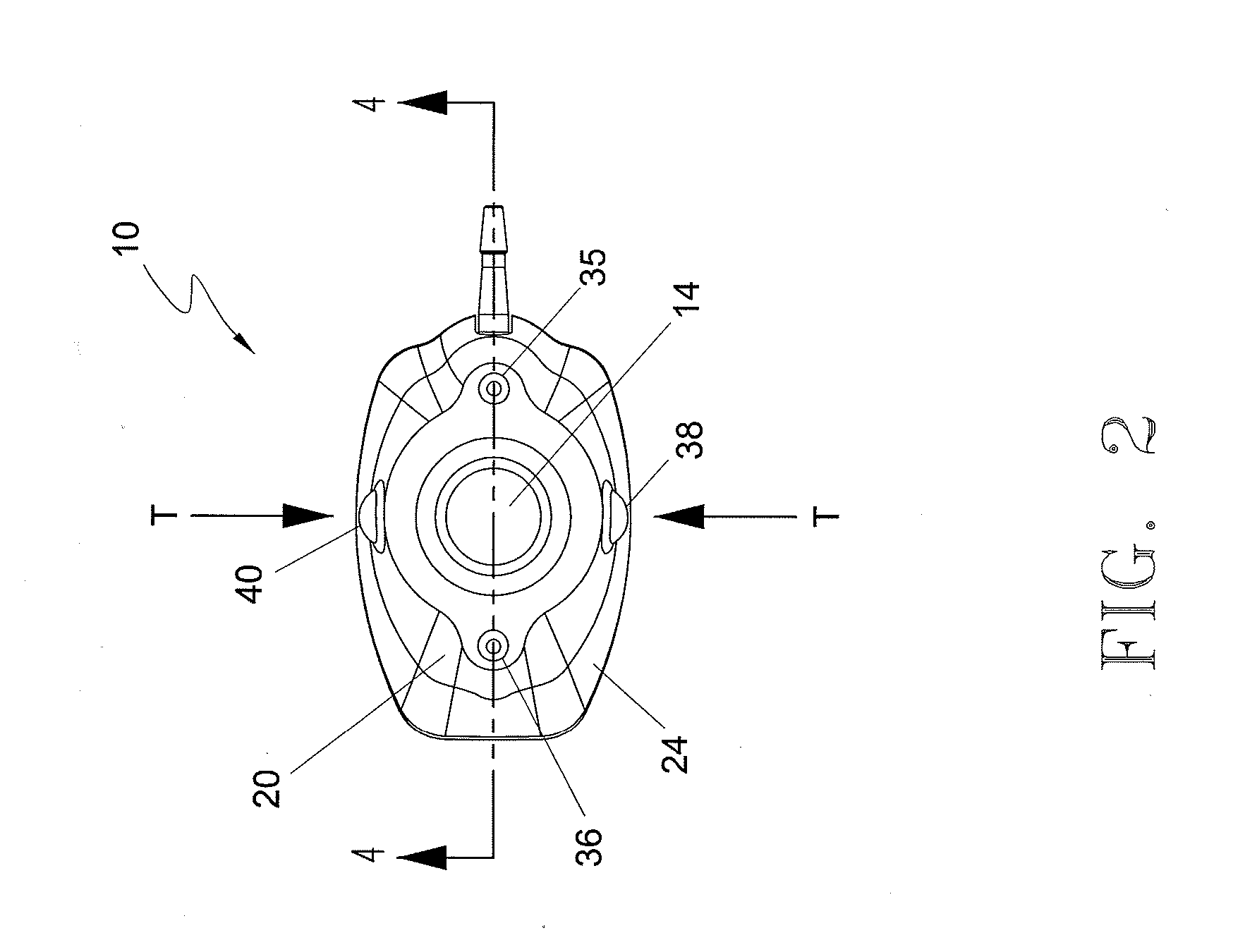Implantable medical device
- Summary
- Abstract
- Description
- Claims
- Application Information
AI Technical Summary
Benefits of technology
Problems solved by technology
Method used
Image
Examples
first embodiment
[0055] In the first embodiment, and in fact in each of the embodiments of the present invention, port 10 includes a guidance system that non-invasively defines the location of septum 14 for purposes of providing a well-defined target for the medical personnel who need to insert a needle through the septum. In each of the embodiments the guidance system comprises at least one light emitting element that is incorporated into port 10 and is adapted to be viewable through the skin of the patient in which the port is subcutaneously implanted. By viewing the light that defines the septum location, the medical personnel will be able to accurately insert the needle through the septum without “trial and error.” The light can also be used to identify the port type, such as a CT-injectable port.
[0056] With reference to FIGS. 1-8, a first embodiment of port 10 is illustrated. In this embodiment, shown in an assembled state in FIGS. 1-5, port 10 comprises an upper housing 20 having a opening 22 ...
third embodiment
[0088] With reference to FIGS. 14-20, a vascular access port 300 constituting the present invention is illustrated. Port 300 generally comprises an outer jacket 302 comprised of a flexible material, a main housing 304 situated within and including a body shape that contours outer jacket 302, a reservoir 306 formed in main housing 304, a pair of batteries 308, 310 that are securely positioned within main housing 304, an LED circuit 312 electrically coupled to batteries 308, 310, and that includes an opening 314 formed therethrough which is positioned concentrically around reservoir 306, a septum 316 that extends through opening 314 and in sealing relation to the open top of reservoir 306, and a cover 318 that is fixedly secured to main housing 304 and in covering relation to the other components of port 300. An exit lumen 320 extends outwardly from main housing 304, through outer jacket 302, and in fluid communication with reservoir 306.
[0089] With reference to FIG. 18A and 18B, batt...
PUM
 Login to View More
Login to View More Abstract
Description
Claims
Application Information
 Login to View More
Login to View More - R&D
- Intellectual Property
- Life Sciences
- Materials
- Tech Scout
- Unparalleled Data Quality
- Higher Quality Content
- 60% Fewer Hallucinations
Browse by: Latest US Patents, China's latest patents, Technical Efficacy Thesaurus, Application Domain, Technology Topic, Popular Technical Reports.
© 2025 PatSnap. All rights reserved.Legal|Privacy policy|Modern Slavery Act Transparency Statement|Sitemap|About US| Contact US: help@patsnap.com



